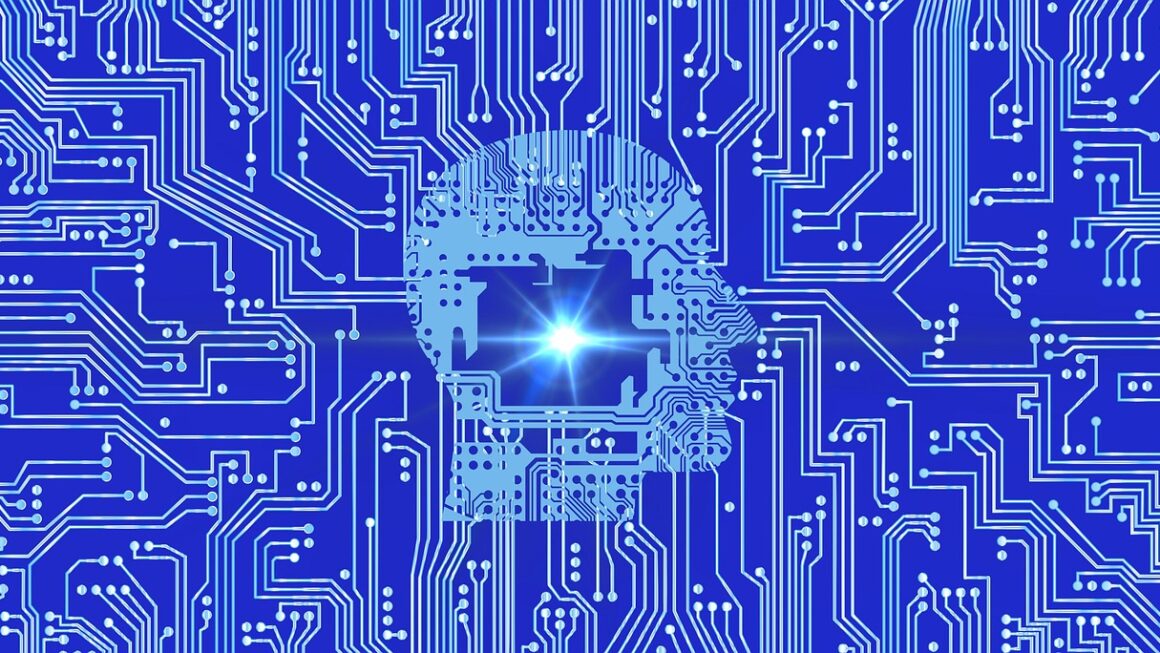Machine learning, once a futuristic concept relegated to science fiction, is now deeply woven into the fabric of our daily lives. From personalized recommendations on Netflix to fraud detection in banking, machine learning algorithms are quietly working behind the scenes to improve our experiences and solve complex problems. This blog post will delve into the core concepts of machine learning, explore its various types, highlight its real-world applications, and provide a glimpse into the exciting future of this transformative technology.
What is Machine Learning?
Machine learning (ML) is a subfield of artificial intelligence (AI) that focuses on enabling computer systems to learn from data without being explicitly programmed. Instead of relying on predefined rules, machine learning algorithms identify patterns in data and use those patterns to make predictions or decisions. This capability allows systems to adapt and improve their performance over time as they are exposed to more data.
Key Concepts in Machine Learning
- Algorithms: The core of machine learning; algorithms are sets of rules and statistical techniques used to learn patterns from data.
- Data: The fuel that powers machine learning; high-quality data is essential for training accurate and reliable models. The more data, the better a model can generally learn, assuming the data is relevant and properly prepared.
- Training: The process of feeding data to a machine learning algorithm to allow it to learn patterns and relationships.
- Prediction: The output of a trained machine learning model, based on new input data.
- Model Evaluation: Assessing the performance of a trained model using metrics like accuracy, precision, and recall. This is critical to understand how well the model generalizes to new, unseen data.
The Machine Learning Process
Types of Machine Learning
Machine learning algorithms are broadly classified into several categories, each suited for different types of problems.
Supervised Learning
Supervised learning involves training a model on labeled data, where each data point is associated with a known output or target variable. The goal is to learn a mapping function that can predict the output for new, unseen data.
- Regression: Predicting a continuous output variable. Example: Predicting house prices based on features like size, location, and number of bedrooms.
- Classification: Predicting a categorical output variable. Example: Classifying emails as spam or not spam.
- Examples of Algorithms: Linear Regression, Logistic Regression, Support Vector Machines (SVM), Decision Trees, Random Forests, and Neural Networks.
Unsupervised Learning
Unsupervised learning involves training a model on unlabeled data, where there is no known output or target variable. The goal is to discover hidden patterns, structures, or relationships in the data.
- Clustering: Grouping similar data points together. Example: Segmenting customers based on their purchasing behavior.
- Dimensionality Reduction: Reducing the number of variables in the data while preserving its essential information. Example: Reducing the number of features in an image while maintaining its visual content.
- Association Rule Learning: Discovering relationships between variables. Example: Identifying products that are frequently purchased together in a grocery store.
- Examples of Algorithms: K-Means Clustering, Hierarchical Clustering, Principal Component Analysis (PCA), Apriori Algorithm.
Reinforcement Learning
Reinforcement learning involves training an agent to make decisions in an environment to maximize a reward. The agent learns through trial and error, receiving feedback in the form of rewards or penalties for its actions.
- Applications: Game playing (e.g., AlphaGo), robotics, autonomous driving, and resource management.
- Key Concepts: Agent, environment, state, action, reward, and policy.
- Examples of Algorithms: Q-learning, Deep Q-Network (DQN), Policy Gradients.
Semi-Supervised Learning
Semi-supervised learning combines elements of both supervised and unsupervised learning. It involves training a model on a dataset that contains both labeled and unlabeled data. This approach is useful when labeled data is scarce or expensive to obtain.
Real-World Applications of Machine Learning
Machine learning is revolutionizing various industries and aspects of our lives. Here are some prominent examples:
Healthcare
- Diagnosis: Assisting doctors in diagnosing diseases by analyzing medical images and patient data.
Example: Identifying cancerous tumors in X-ray images with high accuracy.
- Drug Discovery: Accelerating the drug discovery process by predicting the effectiveness of drug candidates.
Example: Using machine learning to identify potential drug targets for Alzheimer’s disease.
- Personalized Medicine: Tailoring treatment plans to individual patients based on their genetic makeup and medical history.
Example: Predicting a patient’s response to a specific medication based on their genetic profile.
Finance
- Fraud Detection: Identifying fraudulent transactions in real-time by analyzing patterns in transaction data.
Example: Detecting unusual credit card activity that may indicate fraud.
- Risk Management: Assessing and managing financial risks by predicting market trends and creditworthiness.
Example: Predicting the likelihood of a borrower defaulting on a loan.
- Algorithmic Trading: Automating trading decisions by using machine learning algorithms to analyze market data.
Example: Using reinforcement learning to optimize trading strategies in the stock market.
Retail
- Personalized Recommendations: Providing personalized product recommendations to customers based on their browsing history and purchase behavior.
Example: Suggesting products that a customer might be interested in based on their past purchases.
- Inventory Management: Optimizing inventory levels by predicting demand and minimizing waste.
Example: Forecasting the demand for specific products during the holiday season.
- Customer Segmentation: Grouping customers into segments based on their demographics, behavior, and preferences.
Example: Identifying high-value customers who are likely to make repeat purchases.
Manufacturing
- Predictive Maintenance: Predicting equipment failures and scheduling maintenance proactively.
Example: Monitoring sensor data from industrial machines to predict when they are likely to break down.
- Quality Control: Detecting defects in products by analyzing images and sensor data.
Example: Using computer vision to identify flaws in manufactured parts.
- Process Optimization: Optimizing manufacturing processes to improve efficiency and reduce costs.
Example: Using machine learning to optimize the settings of manufacturing equipment for maximum output.
The Future of Machine Learning
The field of machine learning is rapidly evolving, with new algorithms, techniques, and applications emerging constantly. Here are some key trends that are shaping the future of machine learning:
Explainable AI (XAI)
As machine learning models become more complex, it is increasingly important to understand how they make decisions. Explainable AI aims to make machine learning models more transparent and interpretable, allowing humans to understand and trust their predictions. This is particularly important in sensitive applications like healthcare and finance.
- Techniques: Feature importance analysis, rule extraction, and visualization techniques.
- Benefits: Increased transparency, improved trust, and better decision-making.
Automated Machine Learning (AutoML)
AutoML aims to automate the process of building and deploying machine learning models, making it accessible to a wider range of users. This includes automating tasks such as data preprocessing, feature engineering, model selection, and hyperparameter tuning.
- Tools: Google AutoML, Microsoft Azure AutoML, and H2O Driverless AI.
- Benefits: Reduced development time, improved model performance, and democratization of machine learning.
Edge Computing
Edge computing involves processing data closer to the source, rather than sending it to a central server. This can reduce latency, improve security, and enable new applications in areas such as autonomous vehicles and industrial automation. Machine learning models can be deployed on edge devices to perform real-time inference.
- Applications: Autonomous vehicles, industrial automation, and smart cities.
- Benefits: Reduced latency, improved security, and enhanced privacy.
Quantum Machine Learning
Quantum machine learning combines the principles of quantum computing and machine learning to develop new algorithms and solve complex problems that are intractable for classical computers. While still in its early stages, quantum machine learning has the potential to revolutionize fields such as drug discovery, materials science, and financial modeling.
Conclusion
Machine learning is a powerful and transformative technology that is already having a profound impact on our world. From personalized recommendations to medical diagnoses, machine learning algorithms are solving complex problems and improving our lives in countless ways. As the field continues to evolve, we can expect to see even more innovative applications of machine learning in the years to come. By understanding the fundamental concepts, exploring the various types, and staying abreast of the latest trends, you can position yourself to harness the power of machine learning and contribute to its exciting future.




